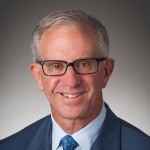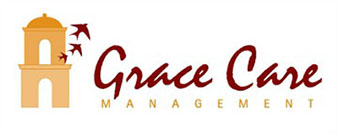 Grace Care is pleased to feature Dr. Michael Lobatz, M.D. of Scripps Encinitas Rehabilitation Center this month. We have been honored to work closely with Dr. Lobatz and his patients for many years. He is one of those physicians who because of a combination of intelligence and heart, brings a deep humanity to his work. Dr. Lobatz exemplifies what so many of us hope to find in a trusted medical professional.
Grace Care is pleased to feature Dr. Michael Lobatz, M.D. of Scripps Encinitas Rehabilitation Center this month. We have been honored to work closely with Dr. Lobatz and his patients for many years. He is one of those physicians who because of a combination of intelligence and heart, brings a deep humanity to his work. Dr. Lobatz exemplifies what so many of us hope to find in a trusted medical professional.
We’ve paraphrased here the Physician’s Oath of Maimonides which he embodies so well: “Inspire me with the love for my art and for thy creatures. In the sufferer let me see only the human being.”
Dr. Lobatz serves as the Medical Director of the Rehabilitation Center at Scripps Memorial Hospital Encinitas and is a senior partner in The Neurology Center. Dr. Michael A. Lobatz was a James Scholar and graduate of the Abraham Lincoln School of Medicine at the University of Illinois, Chicago. Dr. Lobatz completed his internship and neurology residency at the University of California, San Diego where he also served as chief resident during his senior year. He remains active in academics and serves on the clinical core faculty at the Naval Medical Center in San Diego and Scripps Clinic Internal Medicine Residency Programs. He was recently appointed as the Chair of the Clinical Round Table of the Alzheimer Task Force for the County of San Diego.
Dr. Lobatz is a Diplomate of the American Board of Psychiatry and Neurology, Vice President of Medical Affairs, and a past Chief-of-Staff of Scripps Memorial Hospital Encinitas with specialized interests as a neurologist in treatment and rehabilitation of brain injury, stroke, Alzheimer’s disease, and Parkinson’s disease. As such, Dr. Lobatz provides direction and oversight of the entire rehabilitation programs including the Cognitive Brain Injury Program at the Rehabilitation Center at Scripps Memorial Hospital Encinitas.
Dr. Lobatz has participated in numerous clinical research trials during his career including acute stroke intervention, Parkinson’s disease, epilepsy, brain injury, Alzheimer’s disease, multiple sclerosis and many others. He has recently published an article in the Journal of Trauma and Acute Care with colleagues at the Scripps Mercy Trauma Center on TBI in the elderly. He also serves as a member of various boards and foundations including the California Brain Injury Association, the Scientific and Medical Advisory Board of the Alzheimer Association, and the Rancho Santa Fe Foundation.
With almost 30 years of experience Dr. Lobatz has encountered numerous clinical problems and has helped to impart that knowledge and experience by lecturing and teaching medical students, the lay public, residents, and practicing physicians in both the art and science of neurology and rehabilitation. We were lucky to be able to sit down with Dr. Lobatz for a detailed interview about his important work and here we feature his recent interview with Grace Care.
How long have you been Medical Director of Scripps Acute Rehabilitation Unit?
This is my 17th year as Medical Director of the Scripps Inpatient Rehabilitation Center. I became Director in 1998. Prior to that, I practiced neuro-rehabilitation medicine focusing on my stroke and brain injury patients.
Can you give us a short description of the important work done at the Scripps Rehabilitation Center?
The Scripps Rehabilitation Center is made up of an acute inpatient rehabilitation unit, which has 30 beds. It takes care of patients that have spinal cord injury, traumatic brain injury, stroke, as well as those in recovery from complex medical illness. This includes amputation rehabilitation for those who have had single or bilateral or multiple amputations, multiple sclerosis, Parkinson’s disease and various things that can affect an individual’s need to function at the highest degree possible.
As Medical Director of the Scripps Rehabilitation Center, what accomplishments are you most proud of?
I am proud of the fact that our great team of therapists, nurses and physicians have developed a number of programs that are successful in terms of their ability to help patients, including in particular traumatic brain injury rehabilitation. We are certified by the Commission on Accreditation of Rehabilitation Facilities, known as “CARF.” We were the first program in San Diego County to be certified for traumatic brain injury for both the inpatient and outpatient brain injury treatment. We’re also CARF certified in stroke, as well as general rehabilitation.
I am also proud of our traumatic brain injury rehabilitation conference we put on each year. Our 10th anniversary conference was just recently held on March 13-14th at Liberty Station here in San Diego. It was attended by 250 physicians, nurses, and therapists from across the country and world. The faculty that we were able to assemble this year and the years past was an international and global faculty who are leaders in their areas of brain injury rehabilitation and treatment and areas such as brain imaging, robotics, engineering and neuro-rehabilitation treatments.
The speakers this year were Bob Woodruff, the former CBS anchor who has recovered from a brain injury. We had a first time special memorial rehabilitation lecture in honor of a former associate and good friend of mine Thomas Chippendale MD PhD, who passed away last year. He was very interested in neuro-rehabilitation as well and we worked together for many years. Dr. Chippendale was particularly interested in mindfulness based stress reduction and taught a course on this at Scripps Encinitas. He also taught about resiliency and recovery. The keynote speaker for the Chippendale Memorial lecture was Tricia Meili, who was the Central Park Jogger. She discussed recovery and resiliency. The stories of both of these brain injury survivors were phenomenal and a testament to all rehab professionals everywhere in regards of the hard work they do. This conference has been a real joy for me, to watch how much it has expanded over the years.
Scripps has moved into the world of robotic medicine. We are building a robotics program here at Scripps Rehab where we have an exoskeleton, which allows those who are paraplegic or severely weak in their legs to be upright and walk. We have upper extremity robotics as well, and improve function in upper extremities for patients who have weakness or paralysis. The usefulness of robotics encompasses a number of things including increasing the dose of therapy and also providing visual and tactile feedback that can be helpful in teaching a patient how to recover from an impaired limb. A simple example of robotic therapy effectiveness can be seen in a patient who may have difficulty moving their legs. The therapist may manually have them do 50-100 steps in a session. However, if you get a patient into an exoskeleton robot they may be able to walk 1500 steps in a single session. So, being able to leverage the technology smartly with the appropriate patient and with a well trained therapist at Scripps has been a real joy to watch.
What part of your work brings you the most personal satisfaction?
When I see patient’s get better and go on and do things in their lives that are productive or help others, I get the greatest satisfaction. Helping someone achieve what he or she wants to achieve. I have a personal philosophy about medicine that doctors give patients hope!
I have a great story of hope, about a man named William Meredith. He was a well-known and talented poet that I met about two years after he had a severe stroke. William was doing therapy here at Scripps two years after his stroke and through his hard work and dedication of his family and friends was still improving. His story is so great because he lost his speech as a poet and became paralyzed on one side of his body. He was unable to work or do anything at that point. His devoted literary friends and companions helped him, including the likes I’m told of Kurt Vonnegut, Maya Angelou and others like that he knew in his life. He worked so hard trying to recover and he finally got enough of his speech back that he was able to recite his poetry once again. Then, he won the Pulitzer Prize! It is a real story of hope.
I like to share that story because people need examples that show that if you continue to work on things it is much better than sitting back and doing nothing or thinking negative. The brain as we know, has plasticity associated with it and can recover function in various ways. Those are the things that give me the most satisfaction to see, to watch people achieve their goals.
I think we can certainly relate to that feeling. That is why we love what we do at Grace Care, giving hope to people and helping them on their journey of recovery.
Working with your organization has been a great thing over the years. I wish you guys could be there for everybody, because as you know so many people are struggling trying to find their way through care and not knowing what to do.
You have recently been made Medical Director of Scripps Neurosciences. Can you share with us about the work done there?
My training is as a neurologist and I’ve been doing neurology and evaluation of treatments of patients for many years. I’ve helped establish my medical group here in San Diego, The Neurology Center. It is one of the biggest in the Western United States and is now to almost 30 providers in the County. Helping to manage and grow that has been a wonderful experience and I’ve learned a lot in terms of how to make things happen and organize physicians.
Most recently, Scripps Health asked me to come on board and be the chair of their Neuroscience Service Line. The Service Line helps manage neurology, neurosurgery, neuro-rehabilitation services system wide. This includes developing programs in areas such as stroke and epilepsy and other kinds of programs necessary for good care to occur on a systems level for Scripps Health. As such, I chair meetings with other neurologists, neurosurgeons, nurses, and partner with administration to try and coordinate care and improve upon the value of the care, quality and safety of the patients. We are constantly looking for ways to develop programs that make sense in our rapidly changing health care environment.
The health care environment now is very challenging and is too expensive for the country to maintain in terms of the long-term financial health of the United States. Health care spending is near number one in terms of expenditures. So physicians and health care systems need to be smarter, provide better value, address inefficiency and improve the patient experience. Being in the Service Line has been an opening to that world of trying to organize and leverage my experience on a much larger scale rather than just one patient at a time.
What do you see as some of the biggest challenges to the delivery of health care both now and in the future?
Quality, value and safety in patient care are the pillars of how we need to go forward in health care. It is a great challenge to work with populations and patients to improve their overall health. Programs addressing geriatric health with the baby boomers and our elderly population, prevention and treatment of diabetes, dietary and weight control, exercise and blood pressure management are all very important among many others. Those are the kinds of the things on a population health level that are the challenges moving forward, so we can actually reduce the burden of disease in the population and have programs that are much more robust in terms of the value of the care that we deliver.
How do you see care management being most valuable to the health care industry?
Well for instance in terms of Alzheimer’s disease, I’m on the steering committee of the County task force for the Alzheimer’s Project, which started in June of last year by the County Board of Supervisors. That program has three components to it. One, is looking at a cure for Alzheimer’s disease and has brought together the research institutions here in San Diego County to work collaboratively. It’s been interesting to watch and help create opportunities for more research for drug discovery in particular. The second component is the physician part, which is standardization of the diagnosis and management of Alzheimer’s disease. The third part is caregiving. Those three groups of stakeholders are working together to develop and implement plans to care for the 60,000 current patients with Alzheimer’s and the 150,000 current caregivers managing these patients. The number of patients is going to grow with the baby boomer population coming through. Care managers can help manage that population better and provide better resources for patients and physicians for what help is available locally.
For example, we did a recent survey through the Medical Society of Physicians in the county, and asked a number of questions. One question we asked was if they treated Alzheimer’s disease. We discovered that the three main groups treating Alzheimer’s are primary care, psychiatry and neurology. Then, we asked if they knew what resources are available for caregiving in the county. Almost everybody said they did not know what those resources were or how to access various sources for information and help for their patients with Alzheimer’s disease. So the value of a care manager to educate, inform and outreach to not only families but to physicians, is critical to point people in the right direction, reduce caregiver burnout and give patients the easiest and most appropriate path for care and treatments.
Doctors and caregivers need a simple way to be able to tap into resources for their patients and have easy access to it. They need a quick way to point their patients in the right direction, which care managers can assist with. The care managers role is invaluable to the physician.


